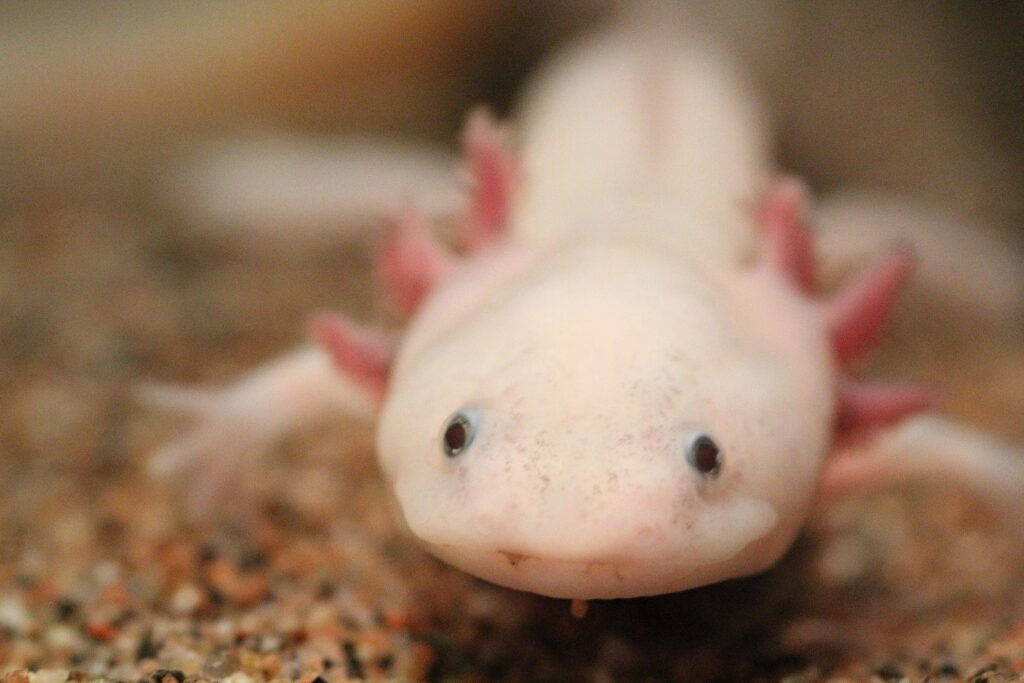By Nicole Gadda
Regeneration–which is the process of recreating lost or damaged tissues after physical injury–isn’t simply a superpower of the Avengers. A creature found in Mexico called the axolotl can seamlessly regenerate entire parts of its body – from relatively simple components like the limbs, to more impressive elements like the eyes, parts of the brain, and the heart.

A white and pink axolotl. Image source.
Axolotls are a type of salamander, an amphibian related to frogs and newts. They can be found in the wild in lakes and other water sources in southern Mexico City, but many axolotls are also kept captive as pets, in zoos, and in research labs.
Similar to many other species of salamander, axolotls possess the remarkable ability of regeneration. After injury, axolotls can completely regrow amputated limbs, severed spinal cords, damaged parts of the heart, and injured sections of their brain! Unlike mammals, which often heal with scarring, axolotls rebuild themselves without forming scar tissue, leaving no visible trace of injury. Exactly how axolotls are capable of such incredible feats is something scientists around the world are trying to understand.
The regenerative capabilities of axolotls have deemed them a model organism in many laboratories. A model organism is a non-human species that is used by scientists to better understand biological processes. Studying the biology of regeneration in axolotls may help researchers learn how to apply their findings to human pathologies and discover new ways to treat injuries and degenerative diseases like Parkinson’s disease, which can cause limb tremors and impaired balance and coordination.
Some researchers have hypothesized that axolotls’ ability to regenerate may be related to their refusal to go through metamorphosis. In animals, metamorphosis is the process of transformation from an immature form to an adult form. A common example is that of tadpoles, which undergo metamorphosis to become frogs. Similarly, caterpillars undergo metamorphosis to become butterflies.

A caterpillar on a leaf. This caterpillar will undergo metamorphosis to become a butterfly. Image source.
Unlike other amphibians, axolotls do not undergo metamorphosis. When animals are young, genes that control growth and organ and limb development are expressed, or turned on. For most, once they reach adulthood, these genes are silenced, or turned off, and are unable to be activated again. But in axolotls, it appears that these genes may be reactivated upon injury. Exactly what genes are involved and how their activation allows for axolotls to regenerate remains an area of ongoing research. Interestingly, humans have many developmental genes in common with axolotls; and identifying how these mechanisms work in these small creatures may help us someday apply it to our own species. However, it will likely take a while before scientists learn how to regenerate entire human beings!
